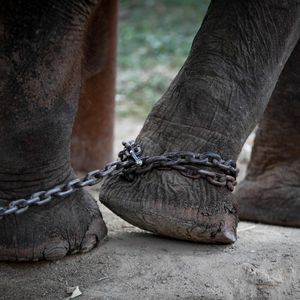Elephant tourism

Elephants have long been used in tourism, from elephant rides and performances to sanctuaries that claim to provide a safe haven for elephants. However, the reality of elephant tourism is far from idyllic. Elephants used in tourism are often subjected to brutal training techniques such as the phajaan, where baby elephants are separated from their mothers and tortured until they learn to obey their handlers. This practice is not only cruel but also detrimental to the elephants' physical and mental health.
Also, the conditions in which elephants are kept in tourist camps are often inadequate. They are confined to small spaces, chained for extended periods, and forced to perform for long hours, causing immense stress and discomfort. In some cases, the elephants are even drugged to make them more docile and easier to handle.
The impact of elephant tourism extends beyond the welfare of individual animals. The demand for elephant rides and performances has led to a surge in captive breeding, with many baby elephants being taken from the wild to meet this demand. This practice is not only illegal but also harmful to wild elephant populations. It disrupts the social structure of elephant herds, leads to genetic problems, and weakens the overall population.
Also, the popularity of elephant tourism has also led to habitat destruction, as forests are cleared to make way for tourist camps and infrastructure. This destruction further threatens wild elephant populations and other wildlife in the region.
See also
List of living captive elephants
External links
The gray area: Can ‘ethical’ elephant tourism ever be truly ethical? Adventure.com
The shocking truth about elephant riding in Thailand tourismteacher.com
